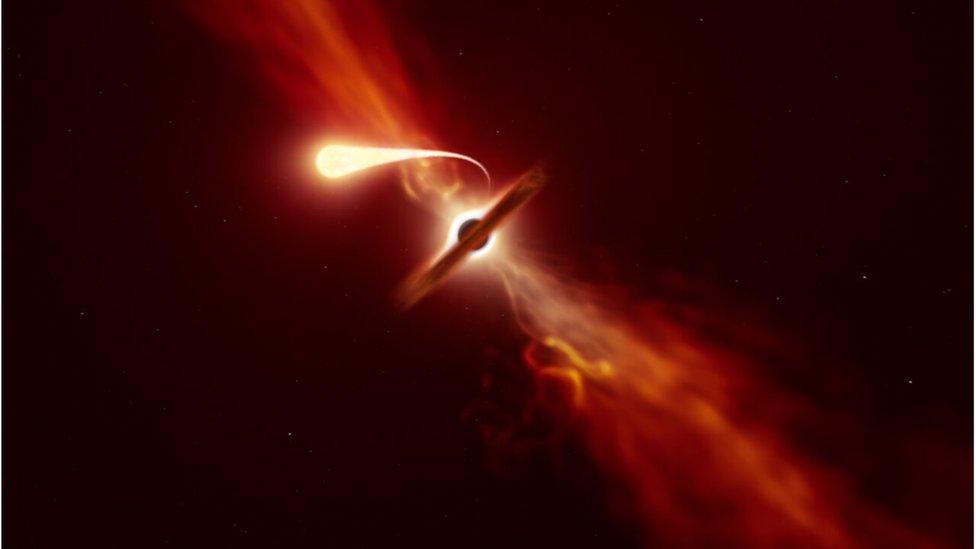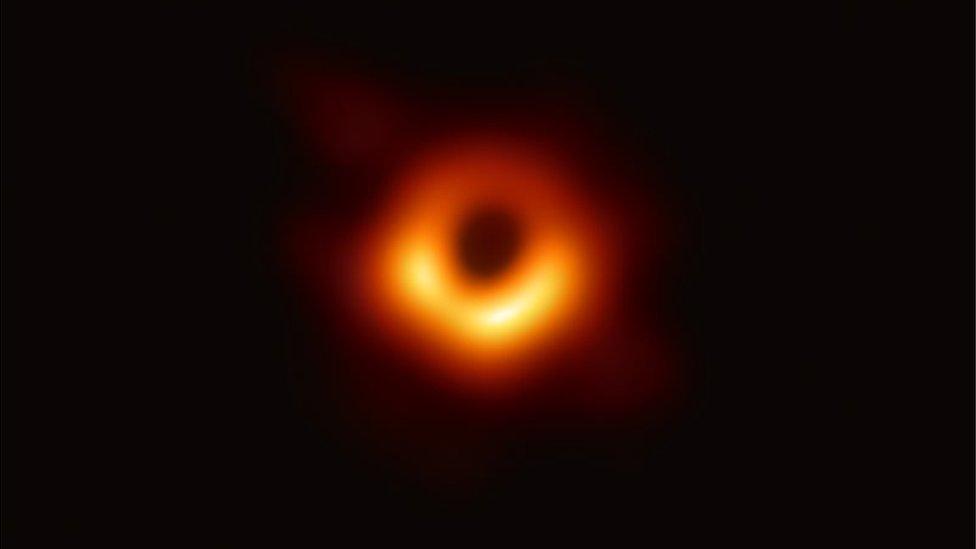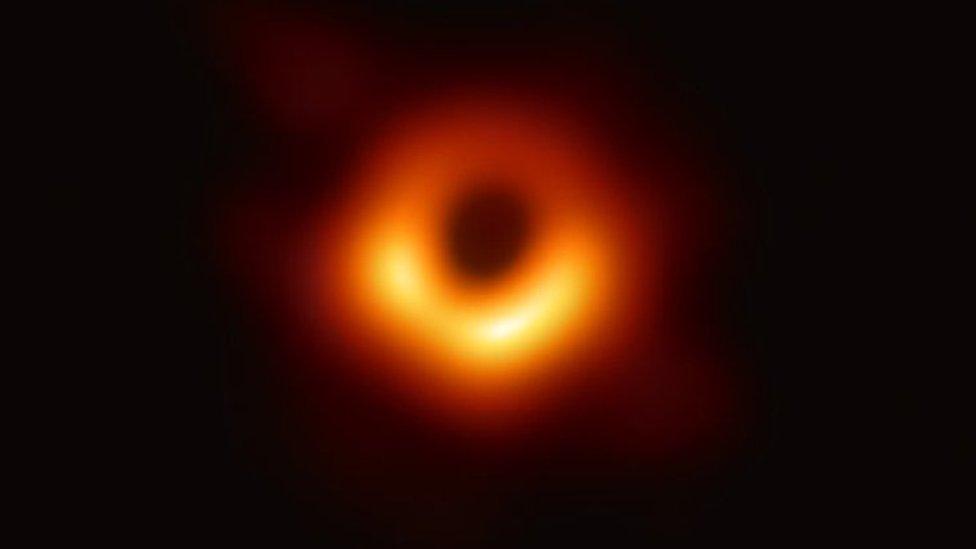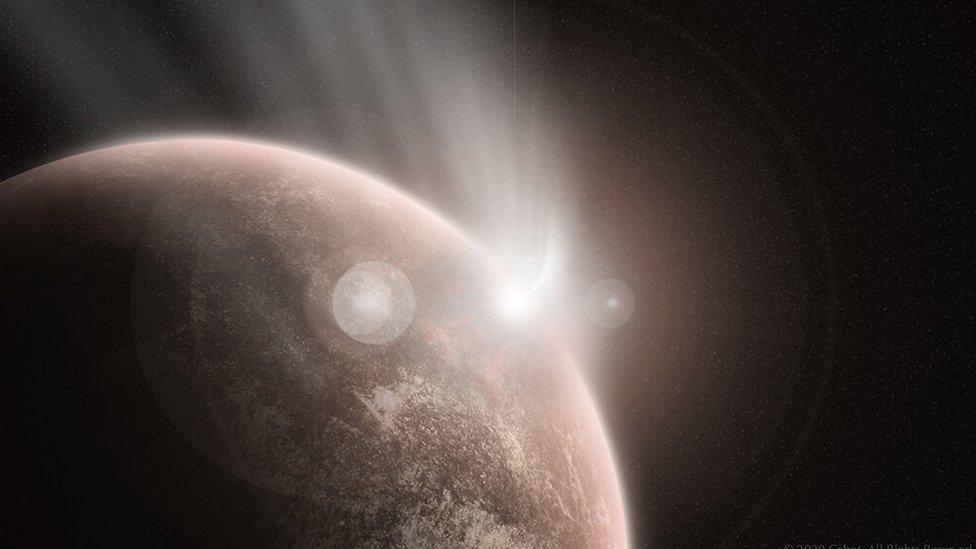Black hole spotted eating a star
- Published
- comments

An artist's impression of a star being ripped apart by a supermassive black hole
Scientists have spotted a rare burst of light from a star falling into a supermassive black hole.
The unusual event was spotted using special European Southern Observatory telescopes in Chile.
It happened over 215 million light-years away which is the closest ever seen to Earth.
The finding is called 'disruption event' and happens when a star gets to close to a black hole, and is pulled in by its extreme gravity.
Over a period of time, the black hole tears the star in shreds. This is called spaghettification.
How does a black hole 'burp'?
Scientists think the material was travelling into the black hole at 10,000 kilometres per second, which is the equivalent of more than 22,369,000 miles per hour.
Normally it's difficult to see such an event because the spectacle of the spaghettification is covered up by loads of dust and debris coming out of the black hole.
However, this time, the scientists were lucky enough to see the disruption event in full because it was found just a short time after the star was ripped apart.
It's thought the finding will help scientists better understand supermassive black holes and their effect on things around them.
The British led study was published in the journal, Monthly Notices of the Royal Astronomical Society.
What is a black hole?

The first ever photo of a black hole
A black hole is a dying star that has collapsed inward under the pressure of its own weight.
The pull of gravity from its centre becomes so strong that even light can't escape, which is why it looks black.
It essentially becomes a super massive vacuum cleaner - sucking in stars, planets or anything that gets too close - or a bit like when you pull the plug in the bath.
Black holes are also invisible, technically speaking, which has meant it has been very tricky for scientists to capture them on camera.
As things get sucked into the black hole the radiation energy bursts out from behind it, creating light.
Most galaxies are thought to have a supermassive black hole at their centre.
- Published11 April 2019

- Published12 October 2020

